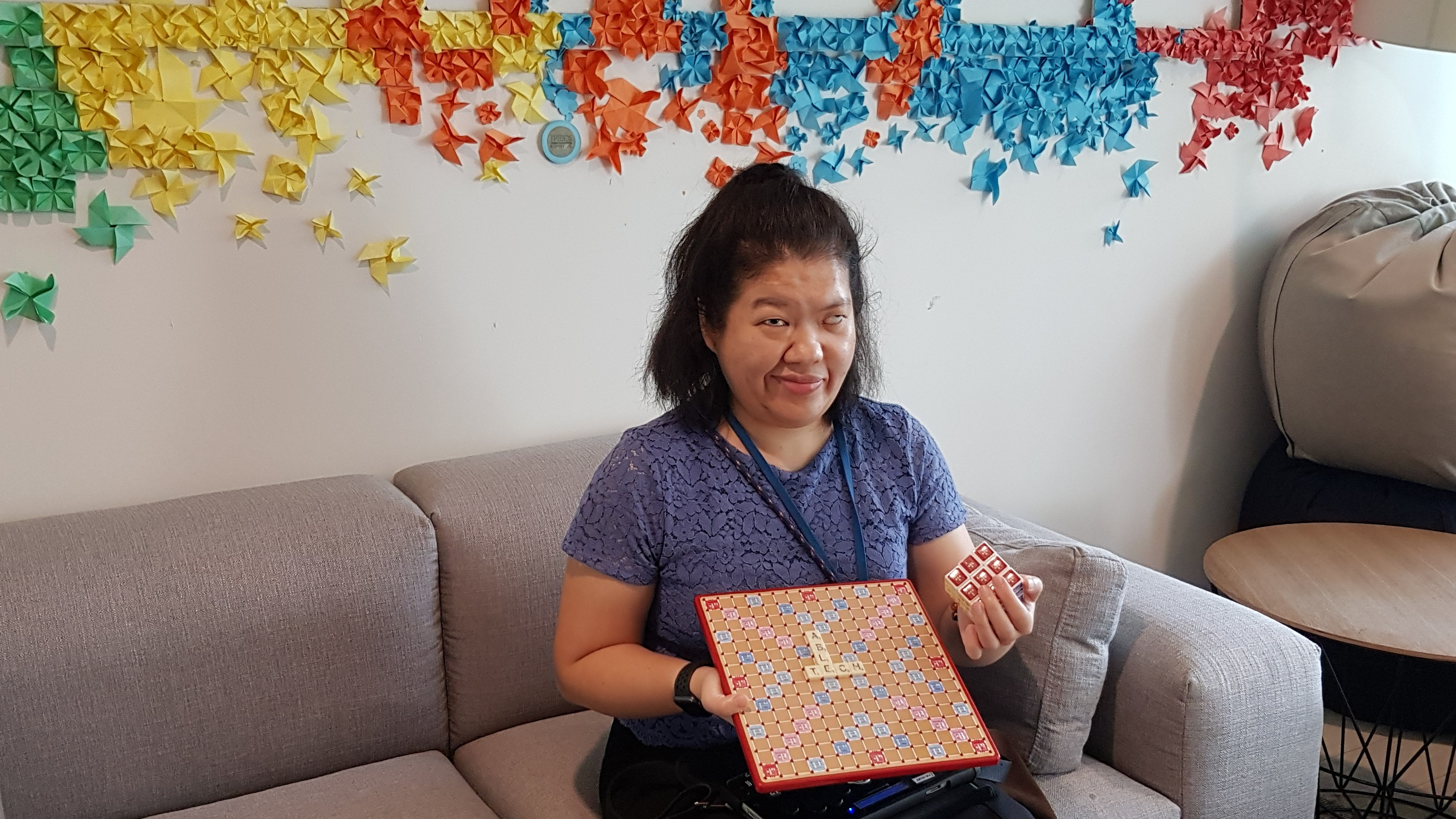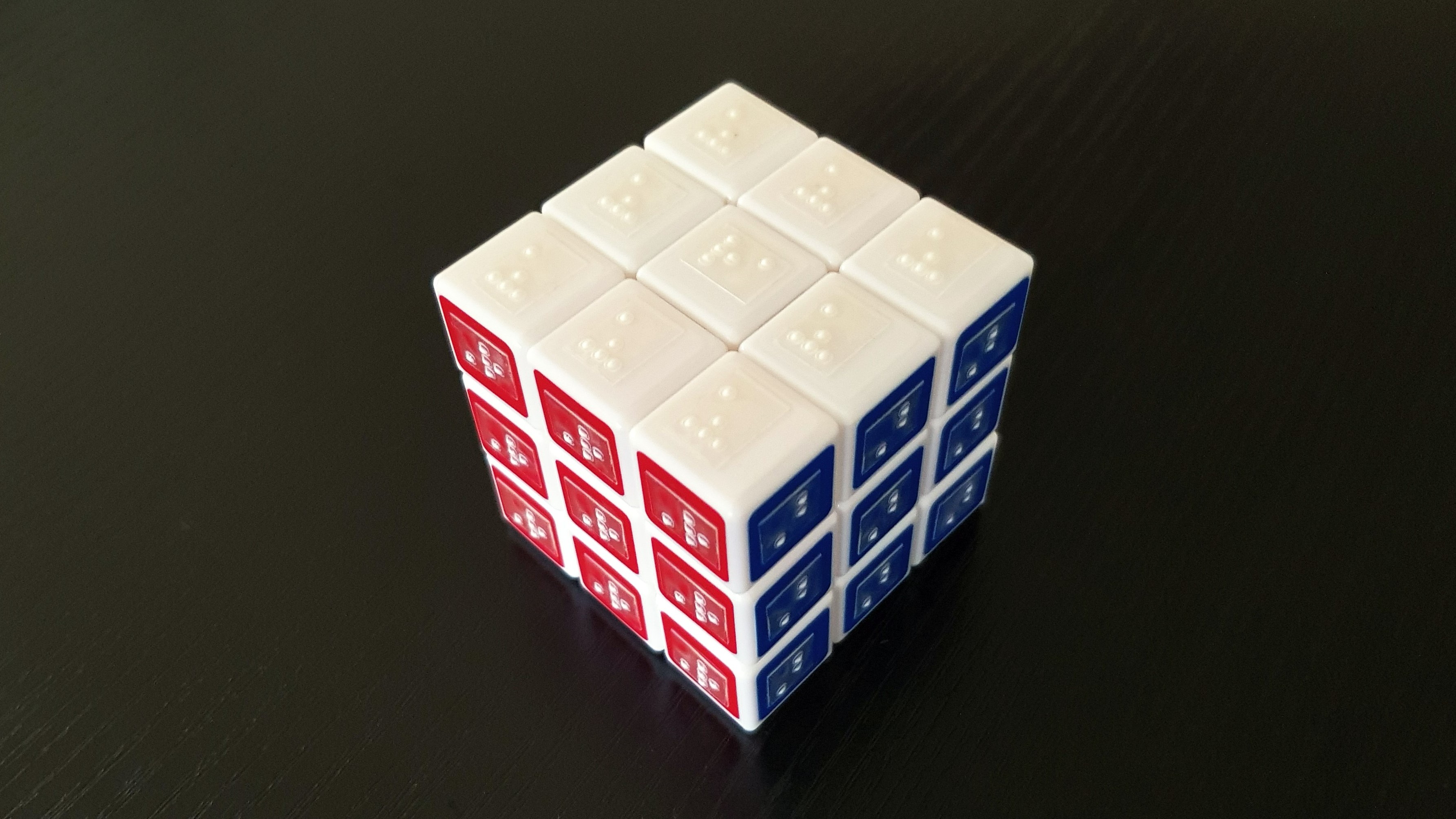
This is the second article in the “Project Adaptive Fun” series in which Siew Ling, who is deaf-blind, shares the simple adaptations she and her team have made to increase the accessibility of games! Read the first article here.
Scrabble is a favourite among friends and families, and even the cartoon series “The Simpsons” had a scene of the family playing Scrabble!
In this multi-player word game, each player takes turns placing letter tiles on the board to form connecting words. The letters carry different numbers of points as indicated on the tiles. Certain squares on the board, such as the Double or Triple Letter Score, and the Double or Triple Word Score, allow the player to get extra points.
-20220712_171214-(scrabble)-(cropped)-(3_2)-ok.jpg?sfvrsn=5c43c440_1)
We adapted the Scrabble game by labelling the board and its letter tiles with braille.
While braille versions of Scrabble are available, they are relatively more expensive and have to be bought from overseas. Instead, we can make this game accessible on our own. As shown in the photo above, we pasted transparent labels embossed with braille (using the 6dot Braille Label Maker) on the Scrabble board and its letter tiles. The label maker, with its built-in keyboard and label cutter, made this process convenient. However, it was still very tedious, since the game has many letter tiles and spaces on the board that needed to be marked (e.g. Double Word Score).
Another puzzle we adapted using the braille label maker is the puzzle cube, which is like a Rubik’s cube.

We adapted the puzzle cube by attaching braille labels denoting the first letter of each colour to each small square.
The puzzle cube has six different coloured surfaces, with 3-by-3 squares on each face of the cube. After the cube is shuffled and randomised, the objective of the game is to rotate the pieces such that the squares on each face are of the same colour.
To make this puzzle accessible, we pasted braille labels denoting the first letter of each colour (e.g. ‘W’ for White) on the 3-by-3 squares (pictured above).
This enables players with visual impairment to recognise the colours of each square, and thus enjoy the game. However, players would need to get used to the potential upside-down orientation of the braille labels, as the puzzle cube gets rotated.
The great thing about the puzzle cube is that you can make it accessible in many different ways. Instead of a braille label, you could paste different tactile stickers (with various materials or textures) to represent the coloured surfaces. It was also much easier to adapt compared to the Scrabble board.
With the simple adaptations made to these games, I’m able to participate and join in the fun as a braille reader. These games (especially the puzzle cube, which I’m still learning to solve) are great workouts for my brain!
Tan Siew Ling is fully Deafblind, having lost both her sight and hearing to a neurological condition, Neurofibromatosis type 2 (NF2). She carries a screen reader with a Braille display, which she fondly names “Bear Bear”, everywhere she goes. Her humour, wordplay, and love of puns keep friends on their toes. She enjoys reading books in her free time and loves to pen down her thoughts, often on a whim, which can be entertaining at times, on her social media. When she is not writing or reading, she can be seen doing insane 72kg leg presses or swinging a 20kg kettlebell to and fro. You can find out more about Siew Ling and her journey here.